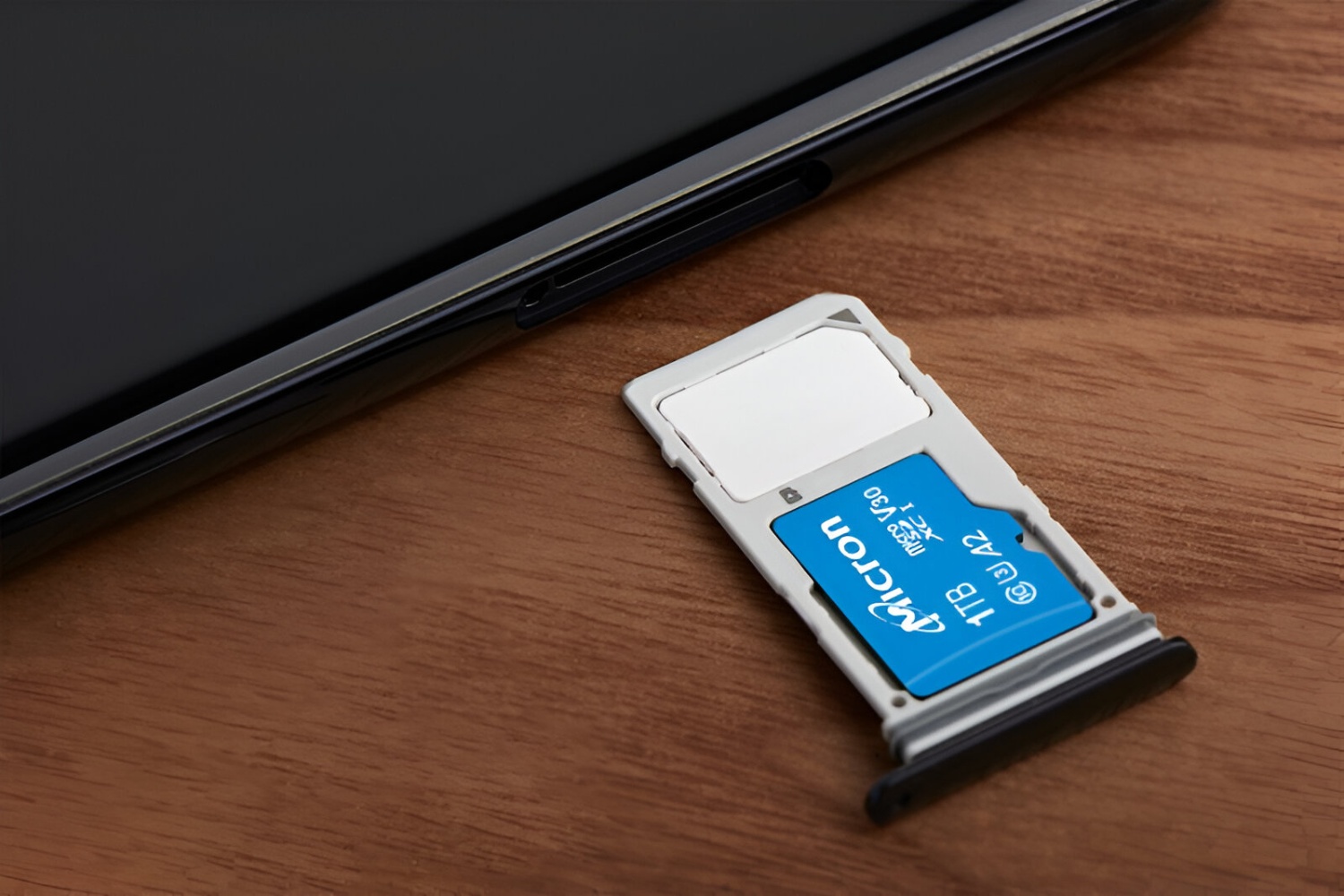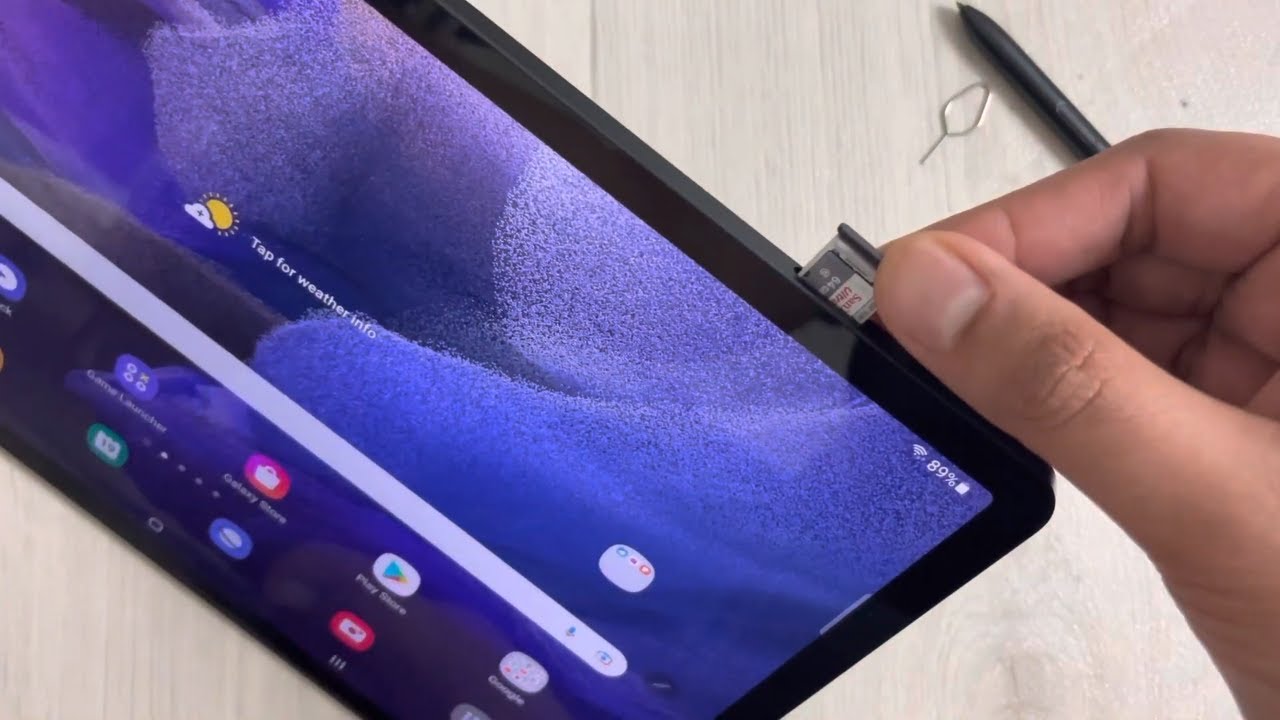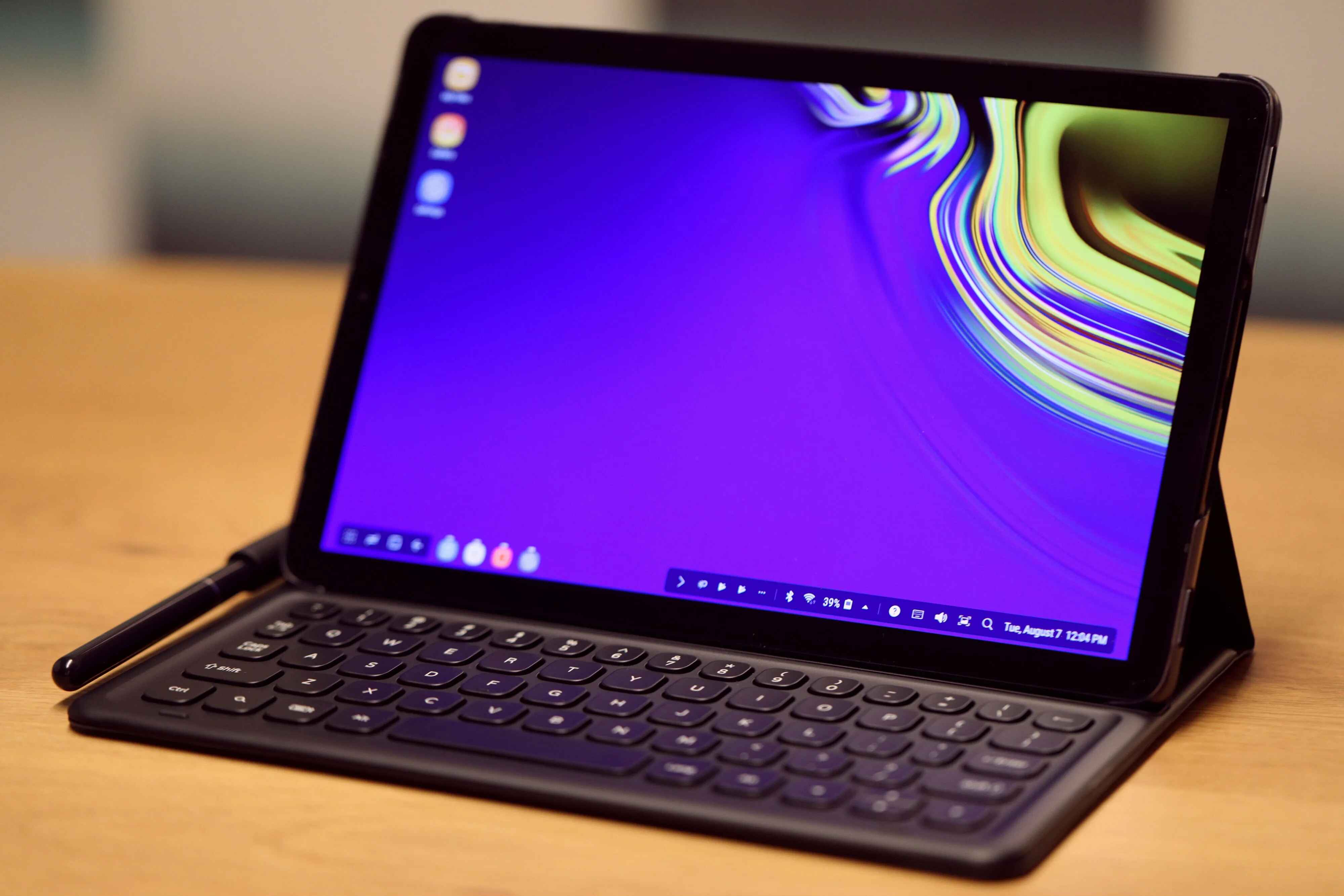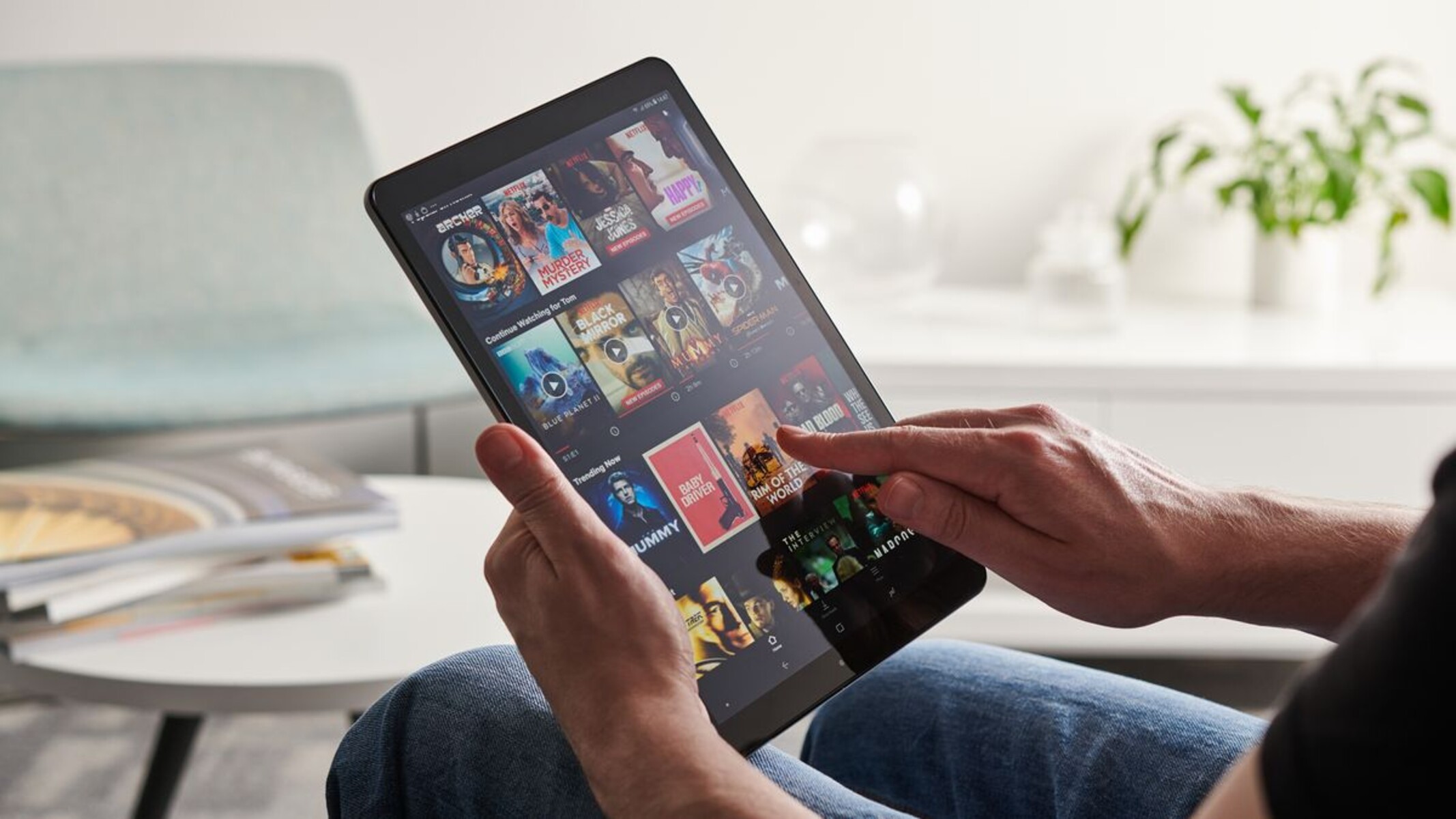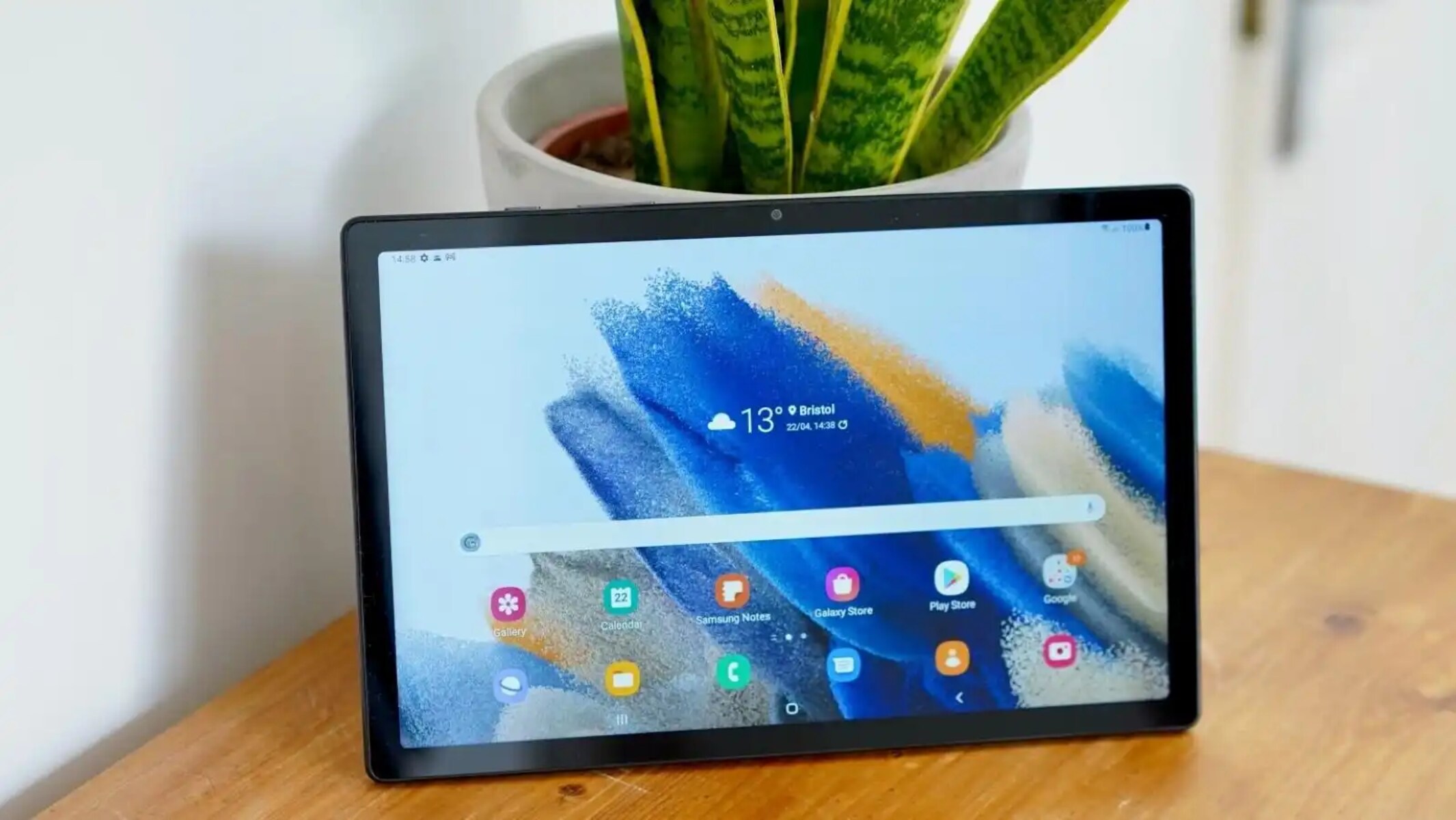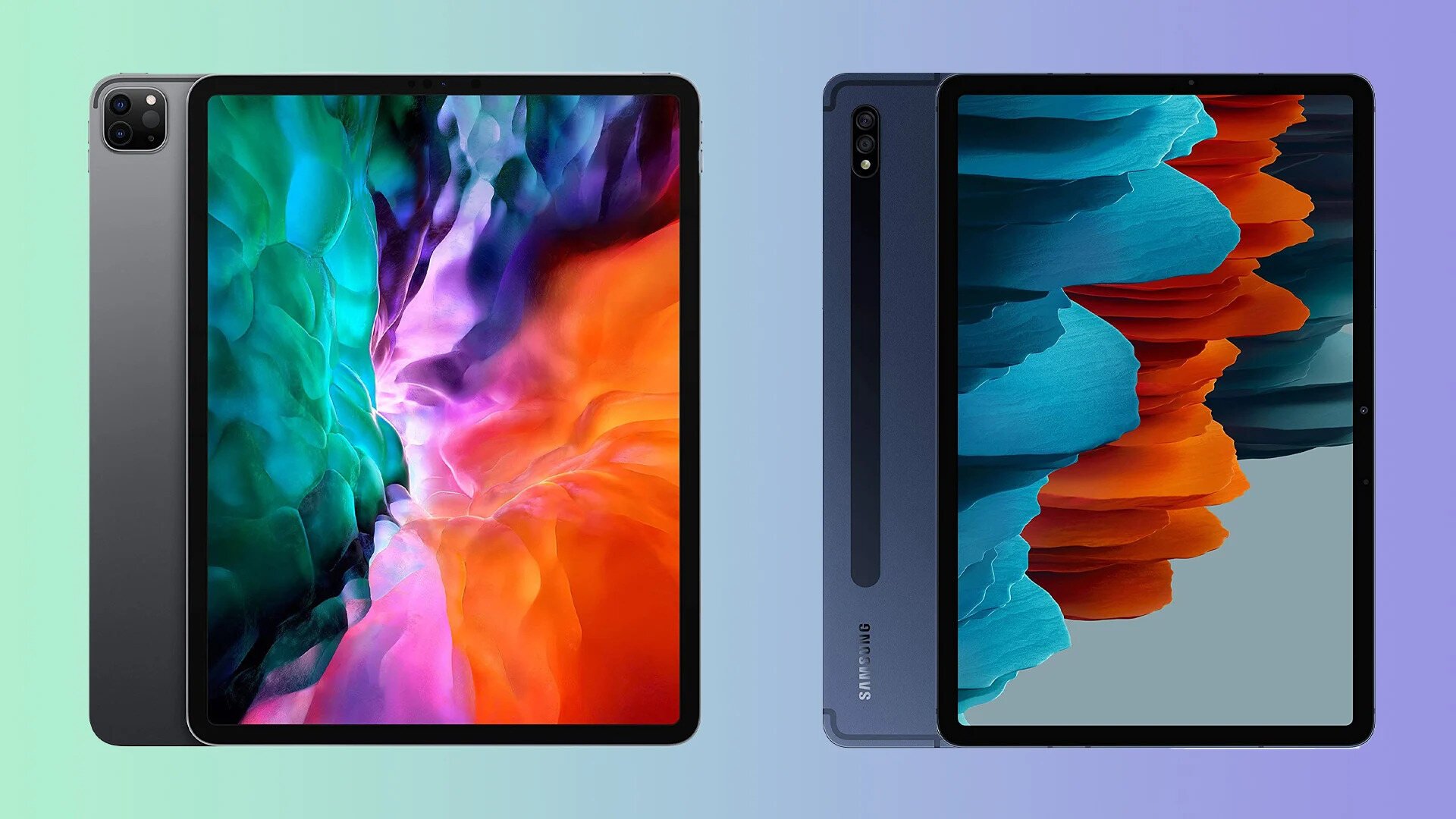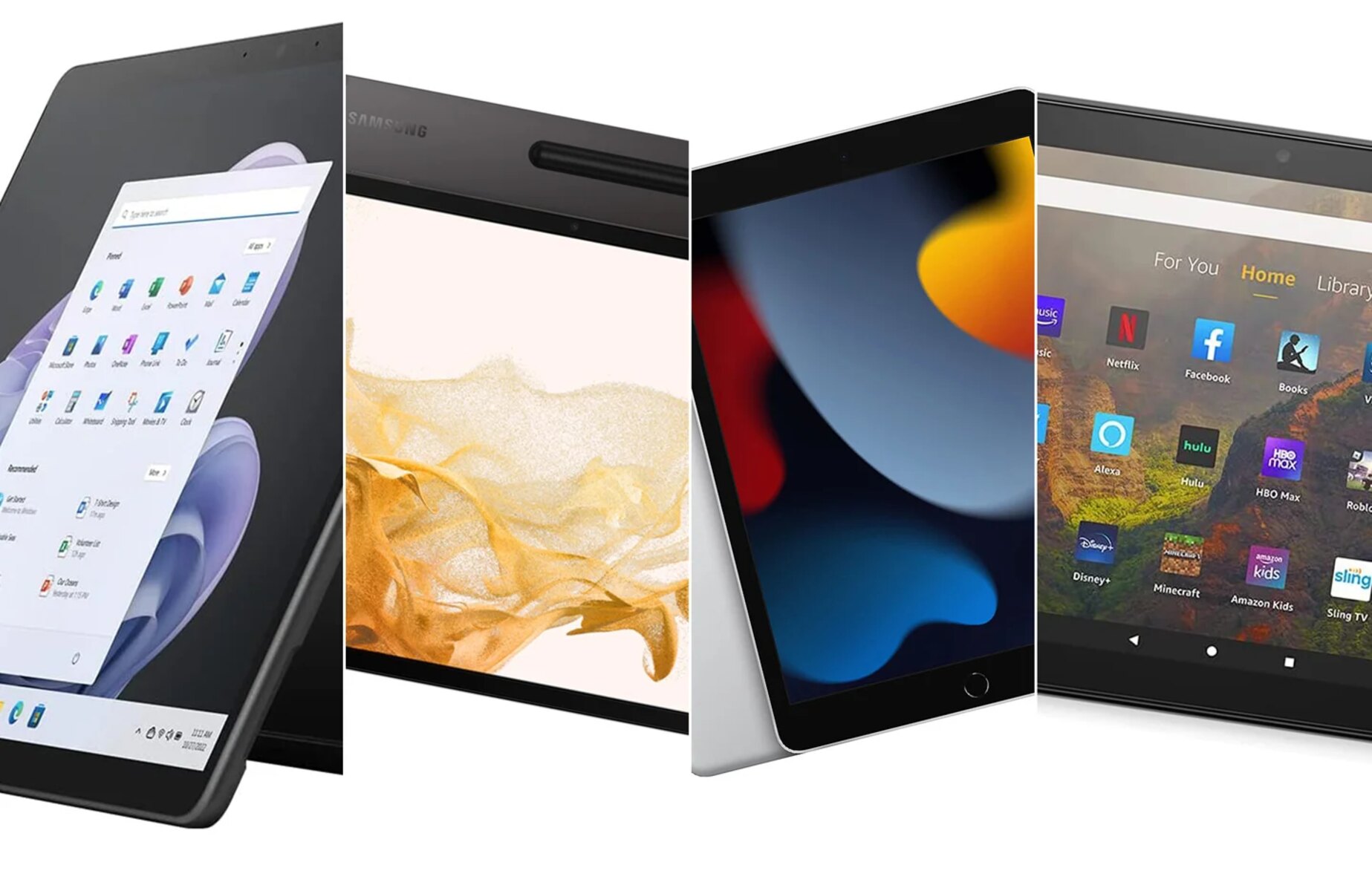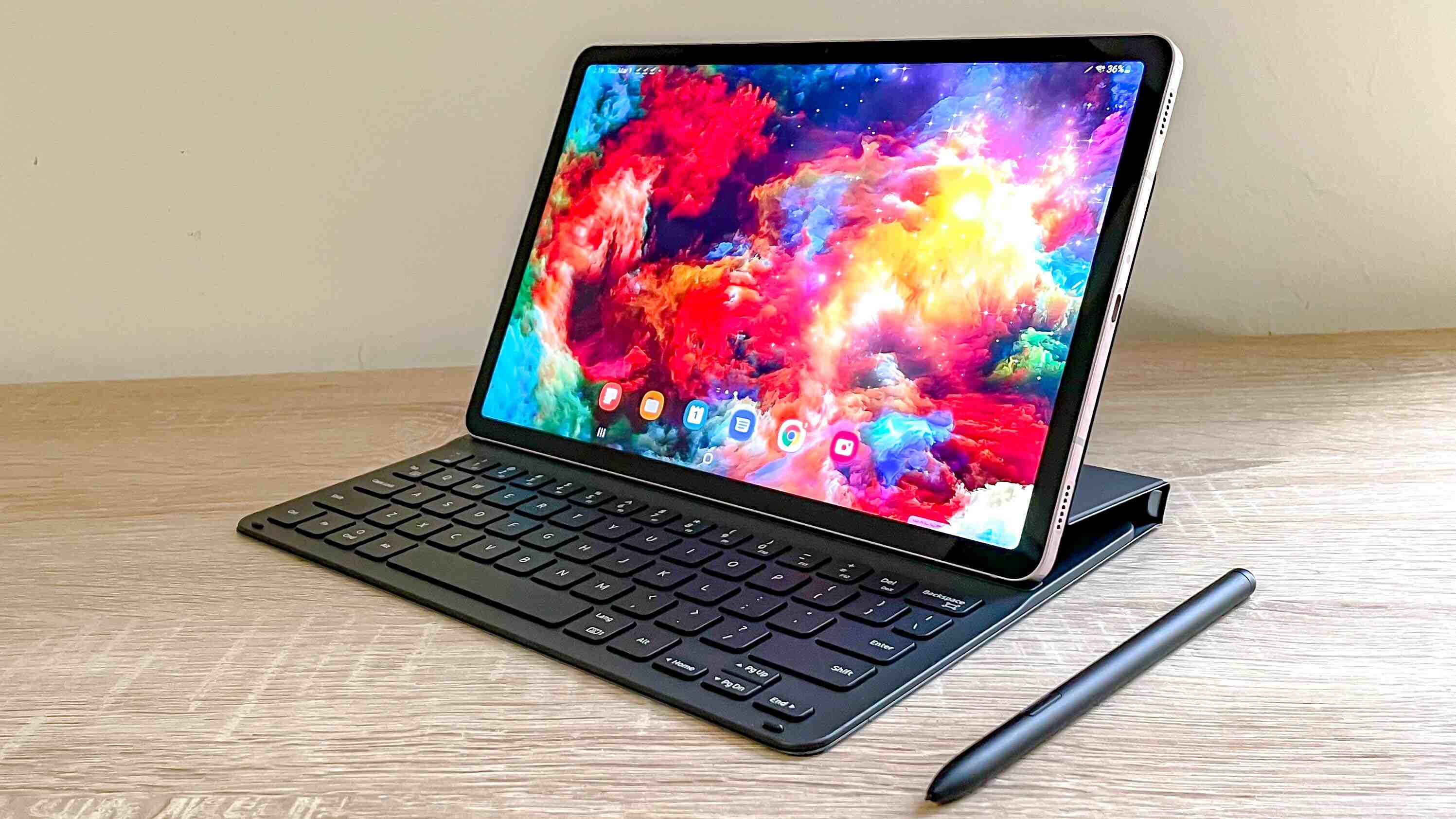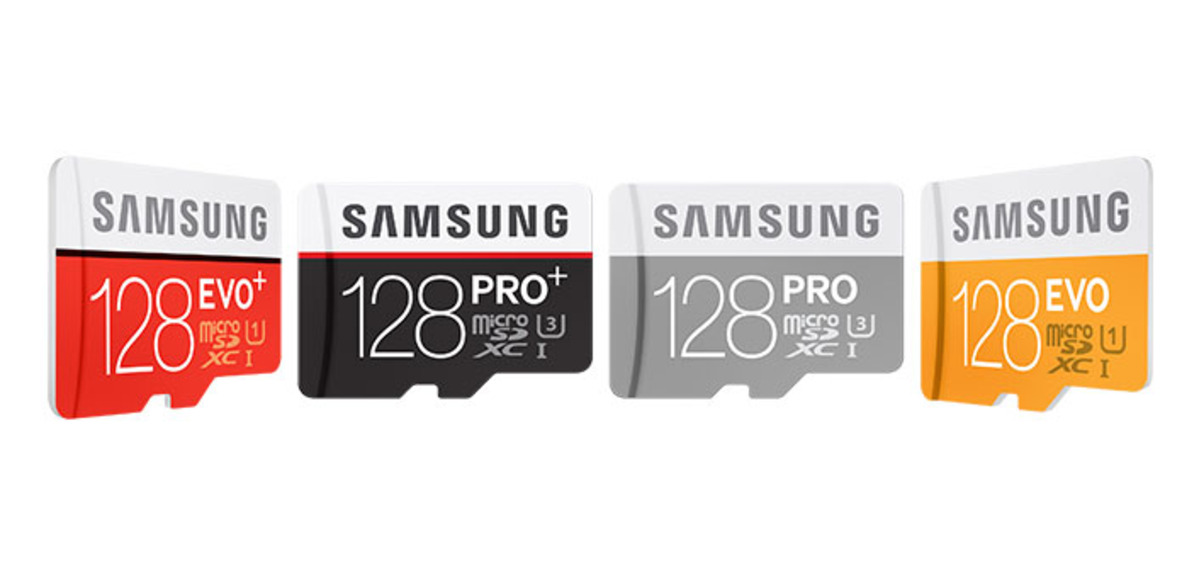#
Introduction
Welcome to this guide on how to add more storage to your Samsung tablet. As technology advances and our digital needs increase, we often find ourselves running out of storage space on our tablets. Whether you want to download more apps, store music and videos, or simply have more room for photos and documents, having enough storage on your tablet is essential for a seamless user experience.
In this article, we will explore various methods to expand the storage capacity of your Samsung tablet. From clearing unnecessary files and apps to transferring files to external storage options like microSD cards and utilizing cloud storage services, we will cover everything you need to know to maximize your tablet’s storage capabilities.
By following the tips and techniques outlined in this guide, you can efficiently manage your tablet’s storage and create more space for the things that matter most to you. So, without further ado, let’s dive in and explore the different ways to add more storage to your Samsung tablet!
#
Understanding the Storage Capacity of Your Samsung Tablet
Before we delve into the methods of expanding your Samsung tablet’s storage, it’s important to have a clear understanding of the storage capacity it offers. Most Samsung tablets come with built-in internal storage, which can range from 16GB to 256GB or more.
However, it’s essential to note that the actual available storage will be less than the advertised capacity. This is because the operating system and pre-installed apps take up a portion of the internal storage. In addition, the file system used for formatting the storage can also result in a slight reduction in available space.
To check the storage capacity of your Samsung tablet and the available space, you can go to the Settings menu and find the “Storage” or “Device Care” option. Here, you will get a detailed breakdown of the storage usage, including how much space is occupied by apps, media files, and other data.
It’s important to keep in mind that the available storage can affect the performance of your tablet. When the storage space becomes limited, it may lead to slower operation and decrease the overall efficiency of the device. Therefore, it’s crucial to regularly assess and manage the storage on your Samsung tablet to ensure optimal performance.
Now that we have a clear understanding of the storage capacity on your Samsung tablet, let’s explore the various methods you can employ to increase your tablet’s storage space.
#
Clearing Unnecessary Files and Apps
One of the easiest and most effective ways to free up storage space on your Samsung tablet is by clearing out unnecessary files and apps. Over time, our devices accumulate a plethora of temporary files, cache data, and unused apps that take up valuable storage space.
To begin the clean-up process, start by reviewing your installed apps. Go through the list and identify any apps that you no longer use or need. Uninstalling these apps will not only free up storage space but also improve the overall performance of your tablet.
Next, focus on removing unnecessary files and data from your device. Navigate to your tablet’s settings and find the “Storage” or “Device Care” option. Here, you will usually find a “Clear Cache” option. Tap on it to remove temporary files and unnecessary data that has been accumulated by your apps and the operating system itself.
You can also manually delete files such as downloaded documents, images, videos, and music that are no longer required. This can be done through the File Manager app, which allows you to browse through your tablet’s internal storage and delete specific files or entire folders.
Lastly, consider utilizing storage optimization apps. These apps are designed to analyze your tablet’s storage usage and suggest ways to optimize it for better performance. They often provide features like junk file removal, app management, and storage cleanup, making the process of clearing up space even easier.
Regularly clearing out unnecessary files and apps will not only free up storage space on your Samsung tablet but also ensure smoother operation and faster response times. So, take a moment to declutter your device and enjoy the benefits of a streamlined and efficient tablet experience.
#
Transferring Files to External Storage
If you find yourself running out of storage space on your Samsung tablet, one effective solution is to transfer files to external storage devices. This not only helps in freeing up space but also provides a convenient way to access your files on other devices. Let’s explore some options for transferring files to external storage.
One of the easiest and most common methods is to use a USB cable to connect your tablet to a computer. Once connected, you can browse through the files on your tablet and transfer them to your computer’s hard drive or an external storage device like a USB flash drive or an external hard drive.
If you prefer a wireless solution, you can utilize cloud storage services like Google Drive, Dropbox, or Microsoft OneDrive. These services allow you to upload your files to the cloud, freeing up space on your tablet while still providing easy access to your files from any device with an internet connection.
Another option is to use a wireless device such as a Wi-Fi-enabled external hard drive or a network-attached storage (NAS) system. These devices create a local network that your tablet can connect to, providing a seamless way to transfer files wirelessly.
Additionally, you can consider using a microSD card to expand your tablet’s storage. Most Samsung tablets have a dedicated slot for a microSD card, allowing you to easily transfer files to the card and access them whenever needed. Make sure to choose a microSD card with sufficient storage capacity based on your requirements.
When transferring files to external storage, it’s important to organize them in a structured manner to easily locate and access them later. Create folders for different types of files, such as documents, photos, videos, and music. This will help you stay organized and find specific files quickly when needed.
By utilizing external storage options and transferring files from your Samsung tablet, you can not only create more space on your device but also ensure that your important files are safely backed up and easily accessible. Choose the method that best suits your needs and start transferring files to external storage today!
#
Using Cloud Storage Services
In this digital age, cloud storage services have become increasingly popular for their convenience, accessibility, and ability to expand storage capacity without the need for physical hardware. Samsung tablet users can leverage various cloud storage services to store and access their files from anywhere with an internet connection. Let’s explore the benefits and methods of utilizing cloud storage services.
One of the most widely used cloud storage services is Google Drive. As a Samsung tablet user, you can take advantage of the seamless integration between your tablet and Google services. Simply sign in with your Google account, and you will have access to 15GB of free storage. You can upload and store documents, photos, videos, and other files securely in the cloud, freeing up precious storage space on your tablet.
Dropbox is another popular cloud storage service that offers seamless synchronization across multiple devices. By creating a Dropbox account, you can store up to 2GB of files for free and easily access them from your Samsung tablet, computer, or smartphone. Dropbox also provides options to share files with others, making it a great choice for collaboration.
If you are already invested in the Microsoft ecosystem, Microsoft OneDrive is an excellent cloud storage option. By signing in with your Microsoft account, you get 5GB of free storage and the ability to access your files from a variety of devices. The integration with Microsoft Office applications allows for seamless file editing and collaboration.
When using cloud storage services, it’s important to consider the security and privacy of your files. Ensure that you use strong passwords and enable two-factor authentication for an added layer of protection. Additionally, be mindful of the data you store in the cloud and choose services with advanced security features for sensitive files.
Uploading files to cloud storage is typically straightforward. Install the respective cloud storage app on your Samsung tablet from the app store, sign in with your account, and follow the on-screen instructions to upload files. Alternatively, you can also upload files through a web browser by visiting the service’s website.
Cloud storage services provide the flexibility to access your files from any device, making it easy to share and collaborate with others. Whether you need to access a document on the go, share photos with friends and family, or collaborate on a project, cloud storage services offer a convenient solution to expand your storage capacity and enhance your Samsung tablet experience.
#
Adding a MicroSD Card
If you’re looking to significantly expand the storage capacity of your Samsung tablet, adding a microSD card is a simple and cost-effective solution. Most Samsung tablets come with a dedicated slot for a microSD card, allowing you to easily increase the storage space without the need for external devices or internet connectivity. Here’s how you can add a microSD card to your Samsung tablet.
First, ensure that you have a compatible microSD card. Check the specifications of your Samsung tablet or refer to the user manual to determine the maximum supported capacity. MicroSD cards are available in various storage capacities, ranging from a few gigabytes to several terabytes.
Next, locate the microSD card slot on your Samsung tablet. Depending on the model, the slot may be located on the side or back of the device. Some tablets have a removable back cover, whereas others may have a pop-out tray or a slot hidden under a small cover.
Once you have located the slot, gently insert the microSD card into the card slot. Be sure to align the card correctly to avoid damaging the card or the slot. Apply a bit of pressure until you feel the card click into place. If your tablet has a removable back cover, reattach it securely.
After inserting the microSD card, your Samsung tablet should recognize it automatically. However, if it doesn’t, go to the Settings menu, find the “Storage” or “Memory” option, and look for the “Mount SD card” or “Format SD card” option. Follow the on-screen instructions to prepare the microSD card for use.
Once the microSD card is recognized and formatted, you can start utilizing it to expand your tablet’s storage. By default, the tablet will save new files, such as photos, videos, and downloaded documents, to the microSD card. You can also manually move existing files from your tablet’s internal storage to the microSD card using the File Manager app or any other file management app of your choice.
It’s important to note that microSD cards can vary in terms of read and write speeds. If you plan to use the microSD card for storing large files or running apps directly from the card, opt for a card with faster transfer speeds to ensure smooth performance.
Adding a microSD card is a straightforward and practical method to expand the storage capacity of your Samsung tablet. With the additional space, you can store more files, install more apps, and enjoy a seamless user experience without worrying about running out of storage.
#
Using USB OTG (On-The-Go)
Another method to expand the storage capacity of your Samsung tablet is by using USB OTG (On-The-Go) functionality. USB OTG allows you to connect external storage devices, such as USB flash drives or external hard drives, directly to your tablet. This provides a convenient way to transfer files, backup data, and access additional storage on the go.
To use USB OTG on your Samsung tablet, you’ll need a USB OTG adapter or cable. This adapter typically has a male micro USB or USB-C connector on one end and a female USB port on the other end. Insert the micro USB or USB-C end into the charging port of your tablet.
Once the OTG adapter is connected, you can plug in a USB flash drive or an external hard drive using a standard USB cable. Your tablet will recognize the connected storage device and allow you to access the files stored on it. Some tablets may require you to enable USB OTG in the Settings menu before it can recognize the connected device.
With USB OTG, you can directly transfer files between your tablet and the external storage device. For example, you can copy photos, videos, or documents from your tablet to the USB flash drive, freeing up storage space, or vice versa. This is particularly useful when you need to transfer large files or have limited internet connectivity.
USB OTG functionality is not limited to external storage devices. You can also connect other USB peripherals, such as keyboards, mice, game controllers, or even USB-powered devices like cameras or microphones, to your Samsung tablet through the OTG adapter.
It’s important to note that not all Samsung tablets support USB OTG. Check the specifications of your tablet or refer to the user manual to confirm if your device has OTG capabilities. Additionally, some tablets may require additional power when using USB OTG, especially when connecting external hard drives. In such cases, you may need to connect the tablet to a power source using a charger or battery pack.
Overall, USB OTG is a versatile and convenient method to expand the storage capacity and enhance the functionality of your Samsung tablet. Whether you need to transfer files, connect peripherals, or access additional storage on the go, USB OTG provides a flexible solution to meet your needs.
#
Conclusion
Expanding the storage capacity of your Samsung tablet is essential for accommodating your growing digital needs. Whether you want to download more apps, store media files, or create space for important documents, utilizing the various methods we discussed can help you optimize your tablet’s storage and enhance your user experience.
Clearing unnecessary files and apps can free up valuable storage space, improve device performance, and ensure smoother operation. Transferring files to external storage options like microSD cards, USB OTG, or cloud storage services offers a convenient way to access your files from different devices while creating more space on your tablet.
Cloud storage services, such as Google Drive, Dropbox, and Microsoft OneDrive, provide seamless integration and accessibility across devices, making it easy to store and share files. Adding a microSD card allows you to significantly expand your tablet’s storage and securely store your files directly on the device.
USB OTG functionality enables you to connect external storage devices and peripherals directly to your tablet, enhancing its versatility and expanding its capabilities. By utilizing these methods, you can optimize the storage on your Samsung tablet and ensure a smooth and efficient experience.
Remember, periodically reassessing your storage and managing it effectively is necessary to maintain optimal performance. Regularly clear out unnecessary files, transfer files to external storage, and leverage cloud storage options to keep your Samsung tablet organized and running smoothly.
By incorporating these storage expansion techniques into your tablet usage routine, you can make the most of your Samsung tablet and enjoy a seamless, storage-rich experience for all your digital needs.







